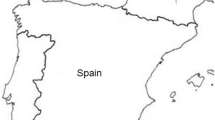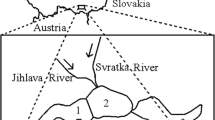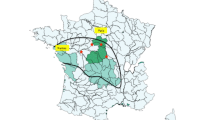Abstract
This study reports data on the contents of organochlorine pesticides and heavy metals in the muscles and livers of eight individuals (five males and three females) of the Pacific walrus Odobenus rosmarus divergens Illiger, 1815, which were captured in the summer of 2011 in Mechigmensky Bay of the Bering Sea. Pesticides, namely α-, β-, and γ-isomers of hexachlorocyclohexane (HCH), dichlorodiphenyltrichloroethane (DDT) and its metabolites dichlorodiphenyldichloroethane (DDD) and dichlorodiphenyldichloroethylene (DDE), as well as the heavy metals Cd, Pb, and Hg were found in all samples studied. The total concentration of organochlorine pesticides in the muscles varied from 200 to 5700 ng/g lipid weight and in the liver from 4900 to 90300 ng/g lipid weight. The concentrations of cadmium, lead, and mercury were 0.04–6.7, 0.13–0.76, and 0.03–0.40 μg/g dry weight, respectively. On the whole, the contents of organochlorine pesticides and heavy metals in the organs of the Pacific walrus were lower compared to those in marine mammals from other regions of the World Ocean.
Similar content being viewed by others
References
Boyarova, M.D. and Trukhin, A.M., Chlorinated hydrocarbons in tissues and organs of the spotted seal (Phoca largha) from the Sea of Japan, Mater. VI Mezhd. konf. “Morskie mlekopitayushchie Holarktiki,” Kaliningrad, 11–15 oktyabrya 2010 g. (Proc. VI Int. Conf. “Marine Mammals of the Holarctic,” Kaliningrad, October 11–15, 2010), Kaliningrad: Kapros, 2010, pp. 87–90.
Burdin, A.M. and Filatova, O.A., Morskie mlekopitayushchie Rossii, Spravochnik-opredelitel (Marine Mammals of Russia, Identification Guide), Kirov: Kirov. Obl. Tipogr., 2009.
GOST (State Standards), 26929-94: Raw Materials and Food Products: Preparation of Samples, Mineralization for Determination of Toxic Element Content, 1994.
Izrael, Yu.A. and Tsyban, A.V., Antropogennaya ekologiya okeana (Anthropogenic Ecology of the Ocean), Leningrad: Gidrometeoizdat, 1989.
Klisenko, M.A., Meltser, F.R., Novikova, K.F., et al., Spravochnik: Metody opredeleniya mikrokolichestv pestitsidov v produktakh pitaniya, kormakh i vneshnei srede (A Manual on Methods for Determining Micro Amounts of Pesticides in Food Products, Feeds, and Environment), Moscow: Kolos, 1983.
Tanabe, Sh. and Subramanian, A., Bioindicators of POPs: Monitoring in Developing Countries, Kyoto: Kyoto Univ. Press, 2006.
Khristoforova, N.K., Bioindikatsiya i monitoring zagryaznenniya morskikh vod tyazhelymi metallami (Bioindication and Monitoring of Marine Water Pollution with Heavy Metals), Leningrad: Nauka, 1989.
Tsygankov, V.Yu., Chlorinated Pesticides and heavy metals in organs of the Gray Whale from the Barents Sea, Izv. Tikhookean. Nauchno-Issled. Inst. Rybn. Khoz. Okeanogr., 2012, vol. 170, pp. 202–209.
Tsygankov, V.Yu. and Boyarova, M.D., RF Patent 2013144081, 2013.
Aono, S., Tanabe, S., Fujise, Y., et al., Persistent organochlorines in minke whale (Balaenoptera acutorostrata) and their prey species from the Antarctic and the North Pacific, Environ. Pollut., 1997, vol. 98, pp. 81–89.
Capelli, R., Das, K., De Pellegrini, R., et al., Distribution of trace elements in organs of six species of cetaceans from the Ligurian Sea, and the relationship with stable carbon and nitrogen ratios, Sci. Òotal Ånviron., 2008, vol. 390, pp. 569–578.
Das, K., Debacker, V., Pillet, S., and Bouquegneau, J.M., Heavy Metals in Marine Mammals, in Toxicology of Marine Mammals, Washington, D.C.: Taylor and Francis, 2003, pp. 135–167.
Gerpe, M.S., Rodríguez, D.H., Moreno, V.J., et al., Accumulation of heavy metals in the Franciscana (Pontoporia blainvillei) from Buenos Aires province, Argentina, Lat. Am. J. Aquat. Mam., 2002, vol. 1, pp. 95–106.
Haynes, D., Carter, S., Gaus, C., et al., Organochlorine and heavy metal concentrations in blubber and liver tissue collected from Queensland (Australia) dugong (Dugong dugon), Mar. Pollut. Bull., 2005, vol. 51, pp. 361–369.
Isobe, T., Ochi, Y., Tanabe, S., et al., Organohalogen contaminants in striped dolphin (Stenella coeruleoalba) from Japan: present contamination status, body distribution and temporal trends (1978–2003), Mar. Pollut. Bull., 2009, vol. 58, pp. 396–401.
Kajiwara, N., Kannan, K., Muraoka, M., et al., Organochlorine pesticides, polychlorinated biphenyls and butyltin compounds in blubber and liver of stranded California sea lions, elephant seals and harbor seals from coastal California, USA, Arch. Environ. Contam. Toxicol., 2001, vol. 41, pp. 90–99.
Monteiro-Neto, C., Vinhas Itavo, R., and Eduardo de Souza Moraes, L., Concentrations of heavy metals in Inia geoffrensis (Cetacea: Delphinidae) off the coast of Ceará, northeast Brazil, Environ. Pollut., 2003, vol. 123, pp. 319–324.
Mössner, S. and Ballschmiter, K., Marine mammals as global pollution indicators for organochlorines, Chemosphere, 1997, vol. 34, pp. 1285–1296.
Muir, D.C.G., Segstro, M.D., Hobson, K.A., et al., Can seal eating explain elevated levels of PCBs and organochlorine pesticides in walrus blubber from eastern Hudson Bay (Canada)? Environ. Pollut., 1995, vol. 90, pp. 335–348.
Park, B.K., Park, G.J., An, Y.R., et al., Organohalogen contaminants in finless porpoises (Neophocaena phocaenoides) from Korean coastal waters: contamination status, material transfer and ecotoxicological implications, Mar. Pollut. Bull., 2010, vol. 60, pp. 768–774.
Popa, O.M., Trif, A., Marine, N., and Ursu, N., Organochlorine pesticides in the Black Sea dolphins, Lucr. Stiint.-Inst. Agron. Cluj, Ser. Med. Vet., 2008, vol. 41, pp. 768–773.
Shaw, S.D., Brenner, D., Bourakovsky, A., et al., Polychlorinated biphenyls and chlorinated pesticides in harbor seals (Phoca vitulina concolor) from the northwestern Atlantic coast, Mar. Pollut. Bull., 2005, vol. 50, pp. 1069–1084.
Westermark, T., Mercury monitoring in Sweden, A Bellagio Conf. “International Problems in Environmental Monitoring,” February 16–18, 1977, New York: Rockefeller Foundation, 1977, pp. 89–104.
Author information
Authors and Affiliations
Corresponding author
Additional information
Original Russian Text © V.Yu. Tsygankov, M.D. Boyarova, O.N. Lukyanova, 2014, published in Biologiya Morya.
Rights and permissions
About this article
Cite this article
Tsygankov, V.Y., Boyarova, M.D. & Lukyanova, O.N. Persistent toxic substances in the muscles and liver of the pacific walrus Odobenus rosmarus divergens Illiger, 1815 from the Bering Sea. Russ J Mar Biol 40, 147–151 (2014). https://doi.org/10.1134/S1063074014020102
Received:
Published:
Issue Date:
DOI: https://doi.org/10.1134/S1063074014020102




